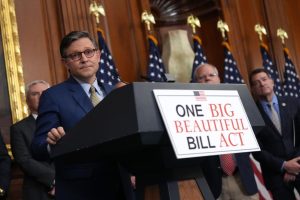The future of climate solutions private equity in the U.S. hinges on the fate of the Inflation Reduction Act (IRA) and related legislation in 2025. Two dominant scenarios emerge: “Money Talks” and “BS Walks,” reflecting drastically different outcomes depending on the balance of power between the executive and legislative branches and the influence of financial stakeholders.
The “Money Talks” scenario posits a resilient financial ecosystem that largely safeguards climate-focused investments. Wall Street and other major investors, recognizing the favorable economics of renewables, would resist substantial alterations to existing incentives. Renewables, now cost-competitive with fossil fuels and offering better long-term prospects, have attracted substantial investment, rendering thermal generation comparatively risky. While certain sectors, such as consumer EV tax credits and offshore wind, might face early sunsetting, core renewable energy development would likely remain shielded from major disruption. Powerful financial players, utilities, and even some Republicans in Congress would likely oppose sweeping cuts to programs that are perceived as beneficial to their interests. Furthermore, the substantial “dry powder” held by infrastructure and private equity firms, often earmarked for energy transition projects, would exert pressure to maintain a favorable investment environment. In this scenario, the anti-climate rhetoric of the administration would be tempered by economic realities, preventing wholesale dismantling of incentives. However, lingering uncertainty and potential legal challenges could still create a period of cautious investment, potentially impacting smaller companies and project developers.
The “BS Walks” scenario presents a more disruptive outlook, characterized by a successful dismantling of climate-related spending by the administration. This scenario hinges on a fundamental constitutional question: the extent to which the executive branch can unilaterally override congressionally mandated spending. Should the administration, with or without Supreme Court backing, effectively seize control over budgetary allocations, the protections offered by financial interests and legislative intent become moot. This would place all federal funding and incentives for climate solutions under threat. The consequences could be catastrophic for the industry, undermining investor confidence and halting project development.
While the “Money Talks” scenario appears more probable, with the financial clout of investors acting as a buffer against drastic policy reversals, the “BS Walks” scenario remains a significant risk. The first half of 2025 might see a slowdown in renewables investment as stakeholders await clarity on the legal and political landscape. Thermal power projects could temporarily benefit from this hesitation. However, as in the previous administration, the underlying economic strength of renewables could drive a resurgence of investment in the latter half of the year.
However, concerns remain that the administration’s anti-climate stance, coupled with potential disregard for congressional authority and judicial oversight, could lead to a devastating year for the industry. Historical precedents, such as the withdrawal of climate investments by major institutions in the early 2010s, highlight the vulnerability of the sector to shifts in political and investor sentiment.
The recent rescission of a proposed spending freeze offers a temporary reprieve, but doesn’t guarantee the safety of legislatively mandated climate funding. The underlying tension between the executive and legislative branches regarding budgetary control remains unresolved, and the coming months will be crucial in determining which path the U.S. will take.
Ultimately, the fate of climate solutions private equity in 2025 rests on a complex interplay of political, legal, and economic forces. While the resilience of the financial sector and the compelling economics of renewables offer some reassurance, the possibility of a disruptive assault on climate-related spending cannot be ignored. The next few months, with increased engagement from Congress and the courts, will be crucial in clarifying the future direction of climate investments.
The “Money Talks” scenario envisions a pragmatic approach where economic interests prevail. The strong performance of renewables and the significant capital invested in the sector would make it difficult for the administration to completely reverse course. While individual programs might face cuts or modifications, the core framework of incentives and support for renewables likely remains intact. This scenario acknowledges the potential for short-term uncertainty and delays in investment decisions as the political and legal landscape unfolds, but ultimately anticipates a continued flow of capital towards climate solutions. The existing pipeline of projects, coupled with the long-term growth potential of renewables, suggests a robust recovery in the latter half of the year.
Conversely, the “BS Walks” scenario represents a more pessimistic outlook. It assumes a successful assertion of executive power over budgetary matters, potentially sidelining congressional intent and judicial oversight. In this scenario, the administration could significantly curtail or eliminate funding for climate initiatives, regardless of their economic viability or the opposition of financial stakeholders. This outcome would create a highly uncertain and unfavorable investment climate, potentially deterring both existing and new investors. The consequences for the industry could be severe, with project cancellations, job losses, and a significant slowdown in the deployment of clean energy technologies.
The recent back-and-forth regarding spending freezes underscores the ongoing struggle for budgetary control. While the temporary reprieve offered by the rescission of the freeze is welcome, it does not eliminate the underlying threat to climate-related spending. The fundamental question of executive power remains unresolved, and the coming interactions between the administration, Congress, and the courts will be decisive. The level of pushback from financial institutions and other stakeholders will also play a critical role in shaping the outcome. Ultimately, the future trajectory of climate solutions private equity in the U.S. hangs in the balance, dependent on the resolution of these complex political and legal battles.










